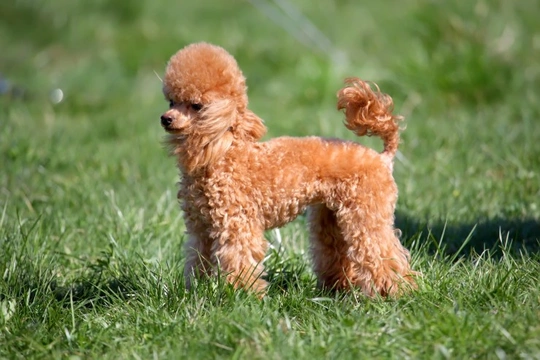
The miniature poodle: Reserve Best in Show at Crufts
The final evening event at the world famous Crufts dog show is of course the hotly contested Best in Show class, which names the winner of the entire show and is widely regarded as the highest accolade in the dog show world. In this class, dogs of all different breeds are pitted against each other in order to find the dog that is the best example of their own respective breed, and the competition is invariably very close between the top three ranked dogs!
At Crufts 2017, the Best in Show winner was an American cocker spaniel, but narrowly missing the winning spot was a miniature poodle called Minaret’s Best Kept Secret, better known as “Frankie” when at home with the family!
The poodle is a breed that we don’t see in the UK as often today as we used to do-but it is also one of the most commonly crossed breeds today too, being of course an essential component of hybrid dog breeds such as the Labradoodle, Cockapoo and many others!
In this article we will look at the miniature poodle breed in more detail, including what they were bred for, why they are so important in crossing to produce hybrid breeds, and what they’re like as pets. Read on to learn more!
More about the miniature poodle
The miniature poodle is one of the three sizes that poodles can be found in, with the other two being standard and toy respectively. The miniature poodle is the middle dog in terms of the size rankings, being larger than the toy but still reasonably small!
The most distinctive thing about the miniature poodle’s appearance is of course their coats, particularly if clipped into the traditional poodle pattern, with lots of pom-poms and contrasts!
While poodles of all sizes might look as if they are simply designed to look pretty and they probably aren’t keen on getting their feet wet, this is far from the truth! A lot of the drop in popularity of the breed over the last couple of decades is likely due to misconceptions about the breed and what they are like.
Poodles are not the finicky, highly strung pampered lap dogs that you might expect them to be-unless they are raised that way, of course-and they were actually originally used for working purposes, and are hugely versatile in general!
The poodle is one of the smartest dogs around, being ranked in the second place position out of all breeds, coming second only to the Border collie. This means that they are capable of fulfilling all types of working roles and taking part in higher level canine sport, as well as of course being able to follow lots of different commands and develop complex skills!
They are also highly energetic and need lots of exercise and mental stimulation to keep them happy.
Finally, the poodle is also a keen and competent swimmer, with their dense, curled coats helping to repel water and keep them insulated when in the water, as well as allowing them to dry off quickly after they’ve taken a dip.
Why aren’t poodles so common today, while hybrid breeds are?
The poodle is one of the main dog breeds used in hybrid crossings to produce dogs that share all of the most desirable traits from both sides of their heritage. This is largely due to the coat that the poodle has, which hybrid breeders hope will be passed onto hybrid offspring.
The poodle coat consists of very dense curls, which when they shed hair, get tangled up in the rest of the coat are are not apt to be shed heavily throughout the home. This means that dogs that possess a coat like the poodle are popular with people who may suffer from allergies to dogs, as they are exponentially less likely to cause an allergic reaction in people.
In fact, poodles have historically been trained as assistance dogs for people with disabilities for this purpose, and the crossing of the poodle to produce other types of dog such as the Labradoodle was first performed for the same purpose.
This means that a large number of dogs in the UK today have some poodle ancestry, and the number of poodle hybrids in the UK now outstrips that of purebred poodles!
Do miniature poodles make good pets?
If you are interested in buying or adopting a miniature poodle, there is definitely a lot to be said for the breed! They are highly intelligent, very energetic and capable of learning lots of different commands and tricks, as well as generally being personable with both other dogs and people, including children.
However, they need plenty of both mental stimulation and exercise, as well as care for their coats, which means that they are not particularly low maintenance dogs, and need an owner that can spend lots of time and attention on them.



